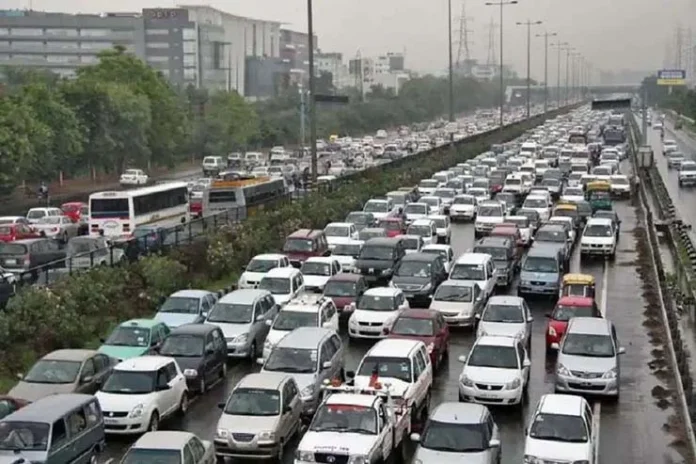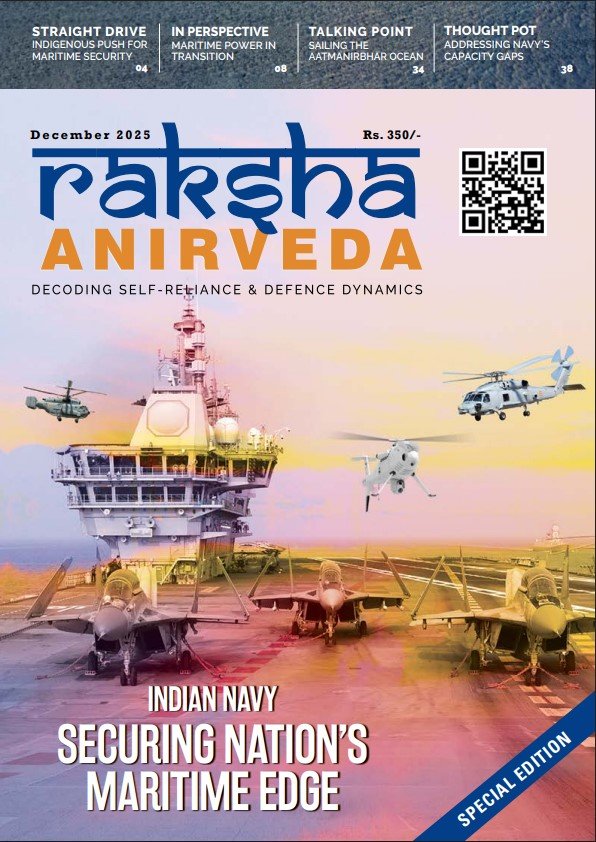I had a severe toothache so I took an appointment with the dentist on 15 May 2023. While travelling on Ajmer Road to Jaipur, I got stuck in a traffic jam caused by the JAN SANGARSH YATRA by local politicians. Thousands of people on scooters, bikes, cars, buses, trucks and tractors blocked a stretch of 15 km of this national highway throwing the entire traffic out of gear. It took me four hours to cover a distance of 20 km, which normally takes 30 minutes. There were many like me who missed a doctor’s appointment or a flight or a train or an urgent meeting. Ambulances with patients on life support were also stuck for hours. All these helpless commuters suffered immense misery in the heat and consequent stress. Who cares!
In the recent past, highways and rail tracks have been blocked for not only hours or days but months by political agitations. The Kissan Andolan laid a seize to the national capital, blocking all roads to Delhi, for almost a year creating unprecedented misery to road users. Going to Delhi was a nightmare. Similar actions by CAA protesters, Jaat or Gujjar reservation agitations caused untold hardships to daily commuters and financial loss of thousands of crores to the national economy. All political and social unrests finally result in blocking the highways, built by tax payer’s money and creating delays to road users, who have paid a heavy toll tax also. Who cares!
Horrendous Driving Experience
For an average Indian citizen driving in any of the major Indian cities is equivalent to waging a daily war. It is not easy to drive among lorries, buses, tractors, autos, bikes, e-rickshaws, bicycles, handcarts, animals and humans. If you take a vehicle out on Indian roads, you are likely to encounter the following adventures:
- Most of the traffic lights at cross-sections may not be working, by design or default.
- A speeding vehicle or two-wheeler zipping crossing your path when you have the green light to go.
- All footpaths being encroached by hawkers, forcing pedestrians to walk on busy roads.
- Unauthorised bus stands being created at all intersections choking the crossings.
- Vehicles being driven on the wrong side with elan.
- Slowest moving tractor trolley or tempo moving in the fastest lane with impunity and not bothered to give way.
- Old ricketier government vehicles, which are not roadworthy but are being driven at neck-break speed.
- Overloaded commercial vehicles or tractor-trolley carrying bhoosa in overflowing and bulging sacks, covering all three lanes of the road. Also include lorries with protruding bars – a potential safety hazard.
- Young boys and girls about 10 years of age riding two-wheelers on national highways, without a
- Bikes with cargo having the width of a car.
- Two-wheelers with three or more pillion riders, all without a helmet.
The list of challenges would keep your adventure levels high. It’s very aptly said that if you drive on Indian roads and come back home without raising your anger quotient, voice or blood pressure, you have truly attained NIRVANA.
Conceptual Logjam
- Slow/Fast: There is a total lack of conceptual clarity and policy coordination in India, with regard to traffic management. While the National Highways Authority is busy making 6-8 lane super highways, the police take great pleasure to barricade them and reduce them to a single lane at so many places. While the Transport Minister takes pride to announce that we can commute faster now, the ground reality is a police van armed with a speed gun. The decision-makers in the country have not been able to decide whether they want us to go FAST or SLOW.
- Roadspace Vs Registration: India’s road networks have grown by about 30 per cent over the past decade, whereas vehicle registrations have risen by almost three times, at the annual rate of 10 per cent. An average of 57,300 new vehicles are added every day. There is no coordination between road space management and vehicle registration agencies. New vehicles are registered with super efficiency with utter disregard for space availability. E-rickshaw registration is one such bad example whereby they have choked the city roads, beyond imagination.
- Bus Lanes: The learned policymakers created bus lanes in major cities, aping the European concept and wasting crores of taxpayers’ Now they are not used by buses because passengers are standing on the side of the road, while the police won’t allow others to use it. Sheer waste of precious road space and government money. Now, there is consideration to dismantle them causing additional financial burden on the exchequer, But who cares!
- Public Transport System: Everybody agrees that creating a robust public transport system is the answer to all traffic woes. Disregarding that cities continue to create more highways and flyovers rather than investing in high-quality public transport. Due to neglect and lack of proper facilities, usage of buses in India’s metropolitan cities has declined by over 20 per cent, in the last decade.
Speed Breakers – Symbol of Power
If you leave the expressway and move into state highways/village roads, you will find speed-breakers almost at every kilometre. Highways have been mercifully spared by the court orders. Speed-breakers are taken as a symbol of power, wherein all passing vehicles slow down to pay obeisance in front of the high and mighty. Every place of a powerful person like a minister/politician or a department of authority like police will always be highlighted by speed-breakers on both sides, as a mark of authority. Sometimes these speed-breakers are vehicle-breakers and one can’t cross them without damaging the car. It has been proved that speed-breakers cause more accidents rather then saving them. But Who Cares!
Driving License Farce
When you see the way people drive on the road, you often wonder who gave them the license to drive? In India, you don’t really need a driving license to hit the road. Thousands of them are driving all kinds of vehicles without a valid license. Research shows that only 41 per cent of drivers have taken the driving test — a dangerous trend, really. Kids of about 10 years or so are given vehicles to drive solo on highways. Even getting a driving license in India is so simple and almost hassle-free that most people are armed with one, without knowing the ABC of driving.
Mechanical Fitness of Vehicles
Mechanical fitness or roadworthiness of vehicles is no consideration in India. We often find very old vehicles about to collapse, moving on the road. More often the headlights are not working at night or the horn is ‘on mute’. Many vehicles would stop in the centre of busy road and won’t start. The complete traffic is blocked. Mechanical failures are a major cause of accidents, in addition to human error but this aspect is totally neglected. Again, who cares!
Ineffective Traffic Police
Any rule or law is as powerful as its enforcement. The traffic police across the country are mostly ineffective with a few exceptions. Police are not to control traffic but to catch the defaulters. Two-wheeler riders and tractor drivers are their brethren and exempted from obeying all rules. The police consider speed as the biggest crime. The fault is always of the person having a larger and faster moving vehicle. Vehicles moving in opposite directions are by ignorant people committing no offence. If that is our enforcement motto, how can traffic management improve in the country?
Future Traffic Management
The traffic management is pathetic with understaffed and inefficient police force. The priorities are misplaced and road blockades for political reasons have no answers. The policymakers need to first accept that it’s a major problem and then sit together to find innovative solutions.
Some of the suggestions which can be considered are as follows:
- Centralised traffic management force like CISF or CRPF free from state compulsions and politics. Training this force in the latest and more innovative techniques of traffic management will be imperative.
- Road blockades by any procession, agitation or for whatsoever reason, will not be accepted at all.
- Artificial Intelligence assisted, dynamic traffic management.
- Remove all speed-breakers, blockades, bottlenecks, toll plazas and potential traffic retarders: Toll plazas can be replaced by GPS assisted road taxation system where you pay as per road usages.
- Centralised digital vehicle registration system: New registrations in the waiting list should be released as per available road capacity.
- Stricter computerised Driving License issue and management system.
- Vehicle fitness certificate to be uploaded before vehicle is put on road. Similarly, provisions to spot and stop older vehicles from road usage.
- Strict measures for traffic violations, like spikes and tyre deflators at red lights.
- Earmark designated parking places and not to permit parking on roads, for any reason.
- Provide cheap, robust and comfortable public transport system as viable alternative.
The above may appear a tall order but it’s doable provided it catches the attention of our decision makers at apex levels. Until then, keep a few books to read in your car, because the jams are likely to get worse before they get better.
Conclusion
We often find the highways being blocked by police barricades, parked trucks/buses, protestors, agitators, social processions and vendors with no fear of penalty, leading to traffic jams and snarls. The number of accidents on the roads is mind-boggling. There were more deaths due to road accidents than the COVID pandemic during the same period. Sooner or later, decision-makers will have to address the traffic menace and solve it with innovative plans, executed ruthlessly. I sincerely hope that our traffic system changes for the good and driving experience becomes a pleasure.
Let’s take a pledge –
“IN THIS COUNTRY OF TRAFFIC JAMS,
LET’S BUILD EXPRESSWAYS OF GROWTH.”
As an experiment, also publish the following article in the blog section:
https://thenewsporter.com/ambassador-the-great-the-car-that-ruled-the-roost-for-generations/
This article first appeared in The News Porter. It has been used here with permission from the website.
-The writer is an avid reader and prolific writer. Post retirement, he is a Social Activist, Career Consultant and a Motivational Speaker of repute. He can be contacted at www.majgencpsingh.com





